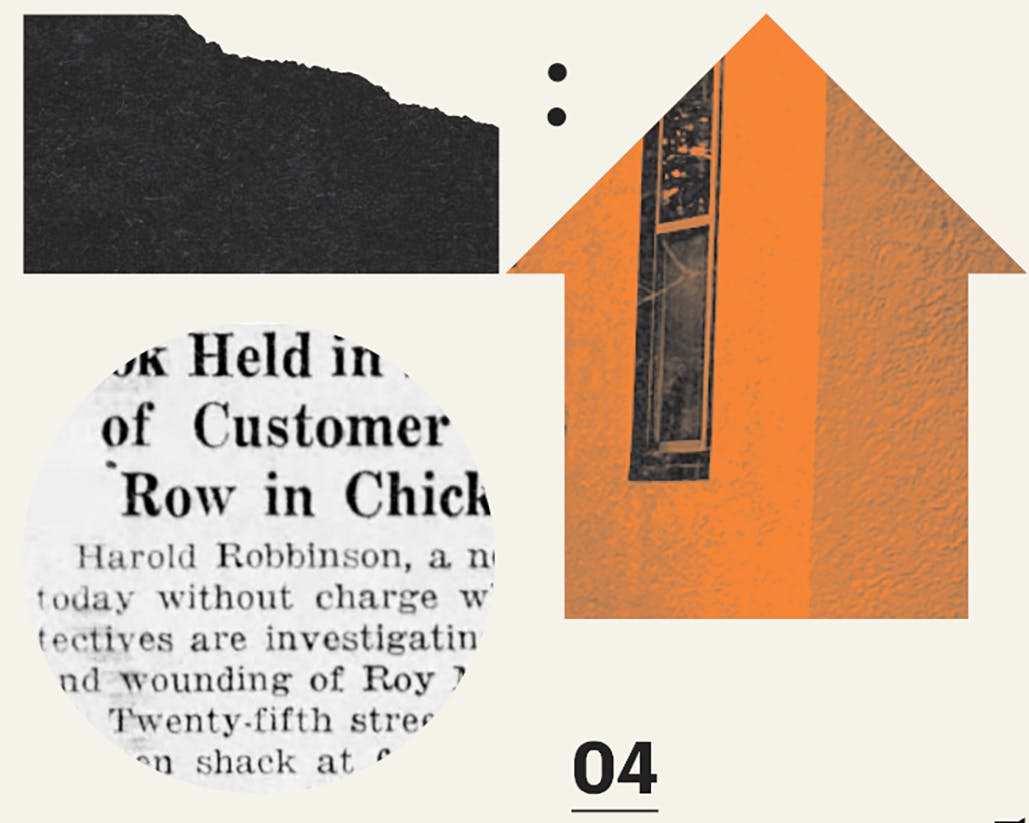

Episode 4: Why Did He Do It?
There is sometimes a steep price to pay for being bold. Eric investigates a mysterious shooting involving Harry, and a damaging accusation that threatens his livelihood on the eve of a global catastrophe. He also makes a shocking discovery that pulls back the curtain on the Robinsons" relationship. They are tested.
Scroll down to view a guide to this episode, which includes photos, newspaper clippings, public documents and more about the people you hear in the episode.
New episodes are released on Mondays.
Episode 4 Guide
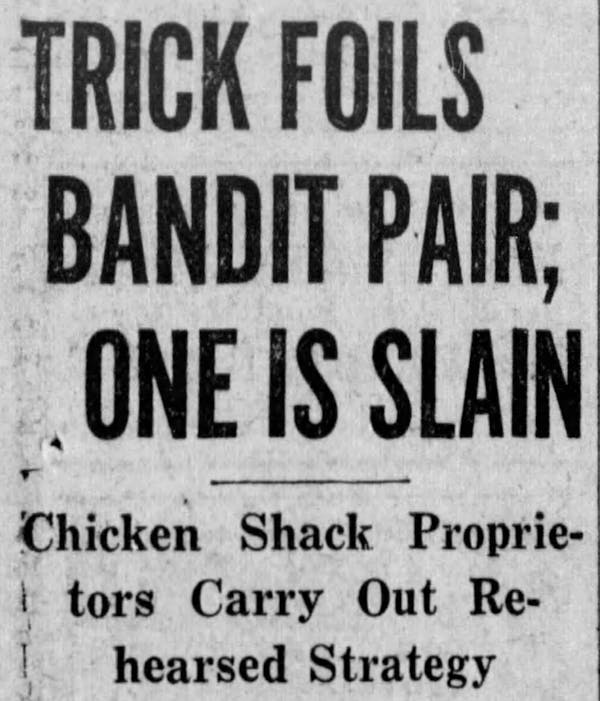
The Minnesota Star Tribune
Chicken shack holdups
News clips from the 1920s, such as this one from 1928, reveal a pattern of holdups at chicken shacks. Could this have been the reason Harry Robinson shot Roy Maddaus?
The Minnesota Star Tribune
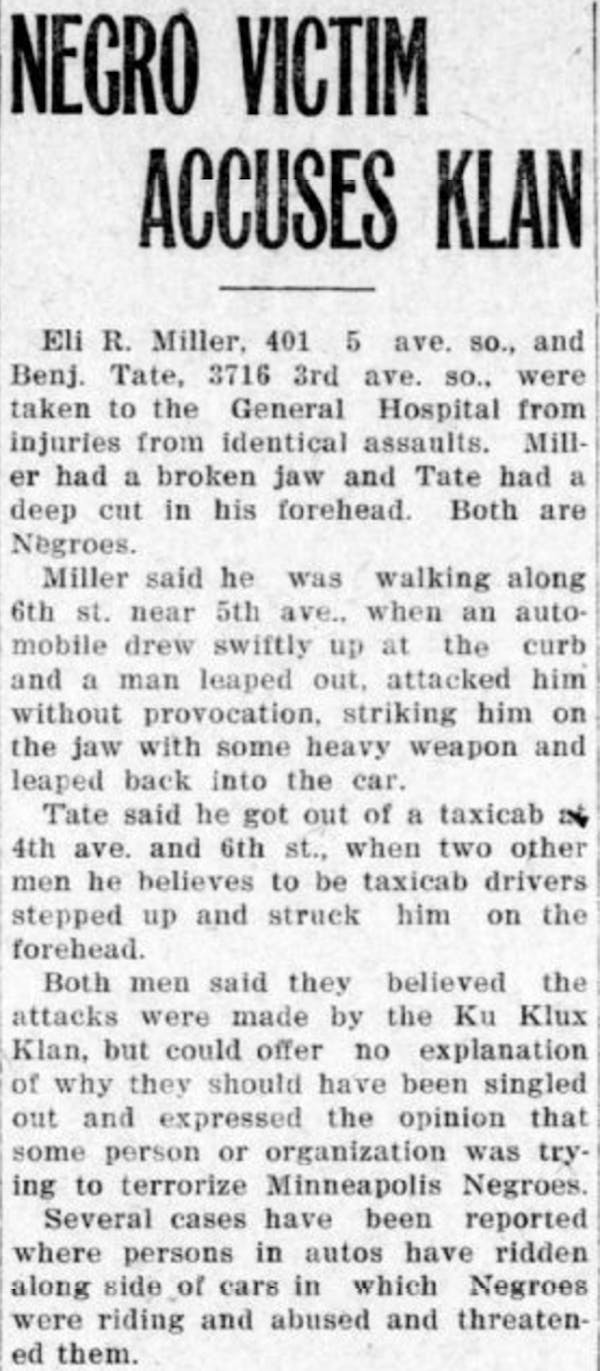
Minnesota Messenger via Minnesota Historical Society
Ku Klux Klan activity
There were at least 10 chapters of the Ku Klux Klan in Minneapolis in the 1920s, according to the book "The Ku Klux Klan in Minnesota." This 1923 clip in the Minnesota Messenger, a Black newspaper, documented the random attack of two Black men in the city. The victims believed the attacks had been orchestrated by the Ku Klux Klan.
Minnesota Messenger via Minnesota Historical Society
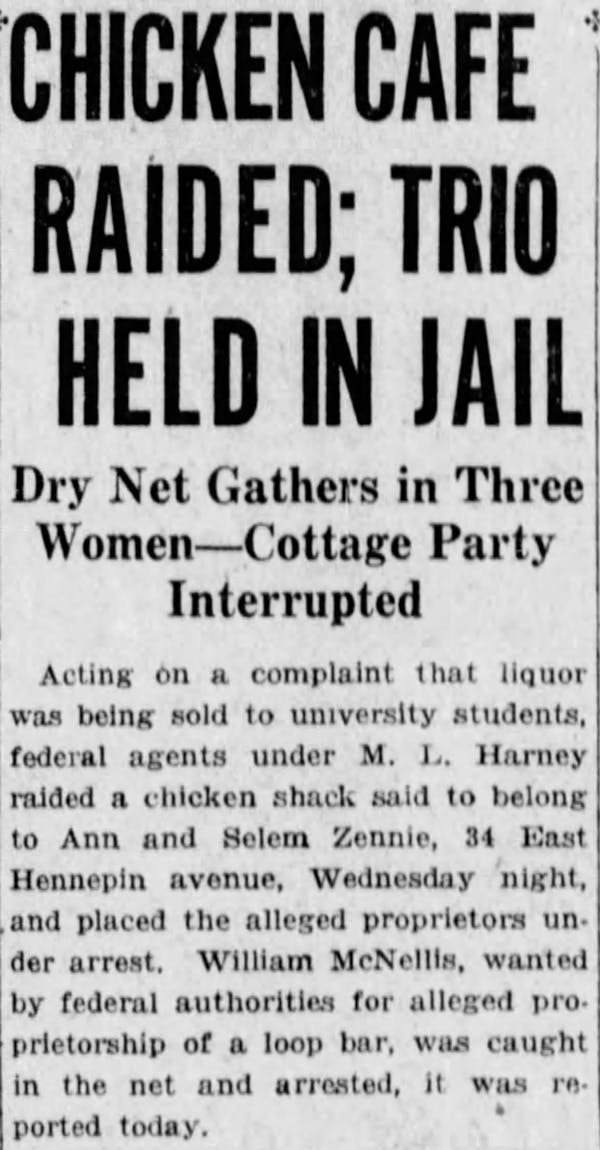
The Minnesota Star Tribune
A bootlegging connection?
There are many news reports from the 1920s about chicken shacks being targeted in Prohibition-era liquor raids. This clip in the Minneapolis Star is from 1924.
The Minnesota Star Tribune
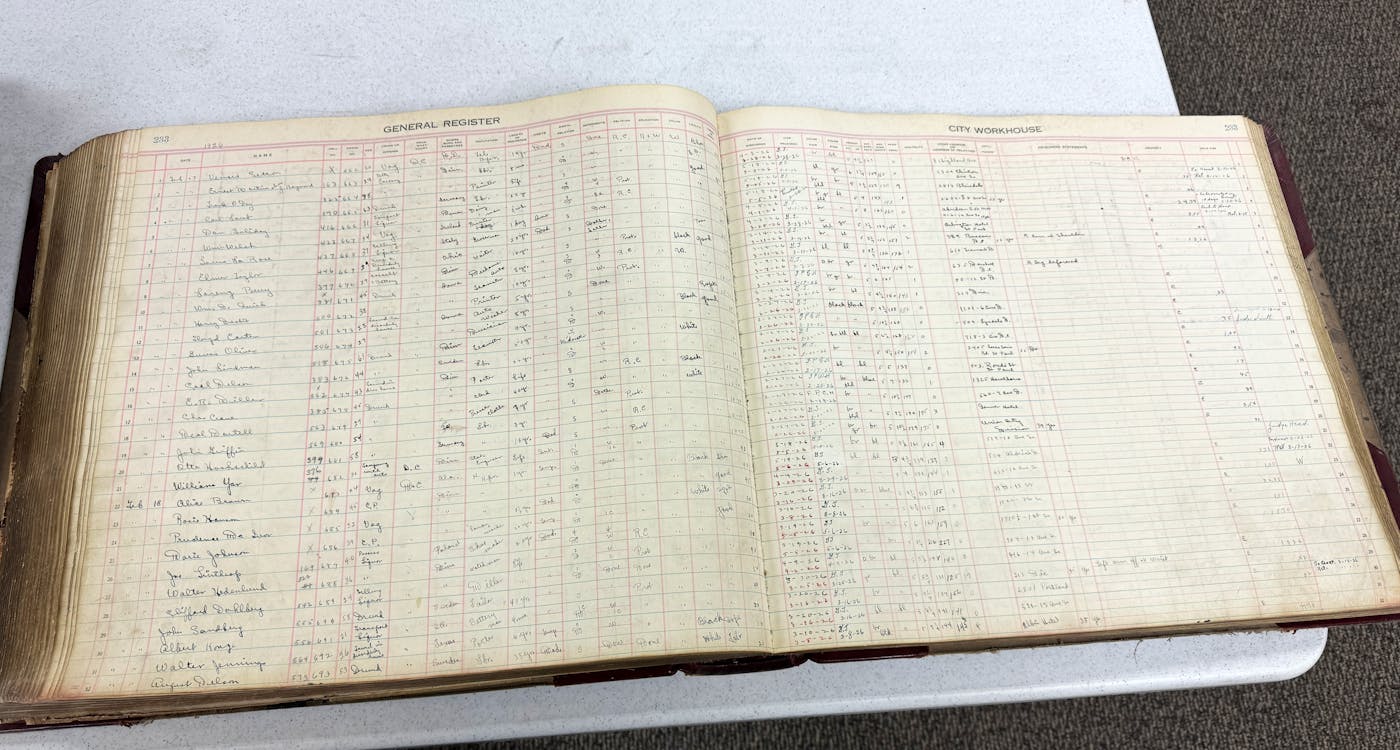
Eric Roper / The Minnesota Star Tribune
The workhouse records
The investigation into the shooting at Little Dixie took reporter Eric Roper to a warehouse that contains the city workhouse records. This page of the workhouse register is from the period just after the shooting in 1926.
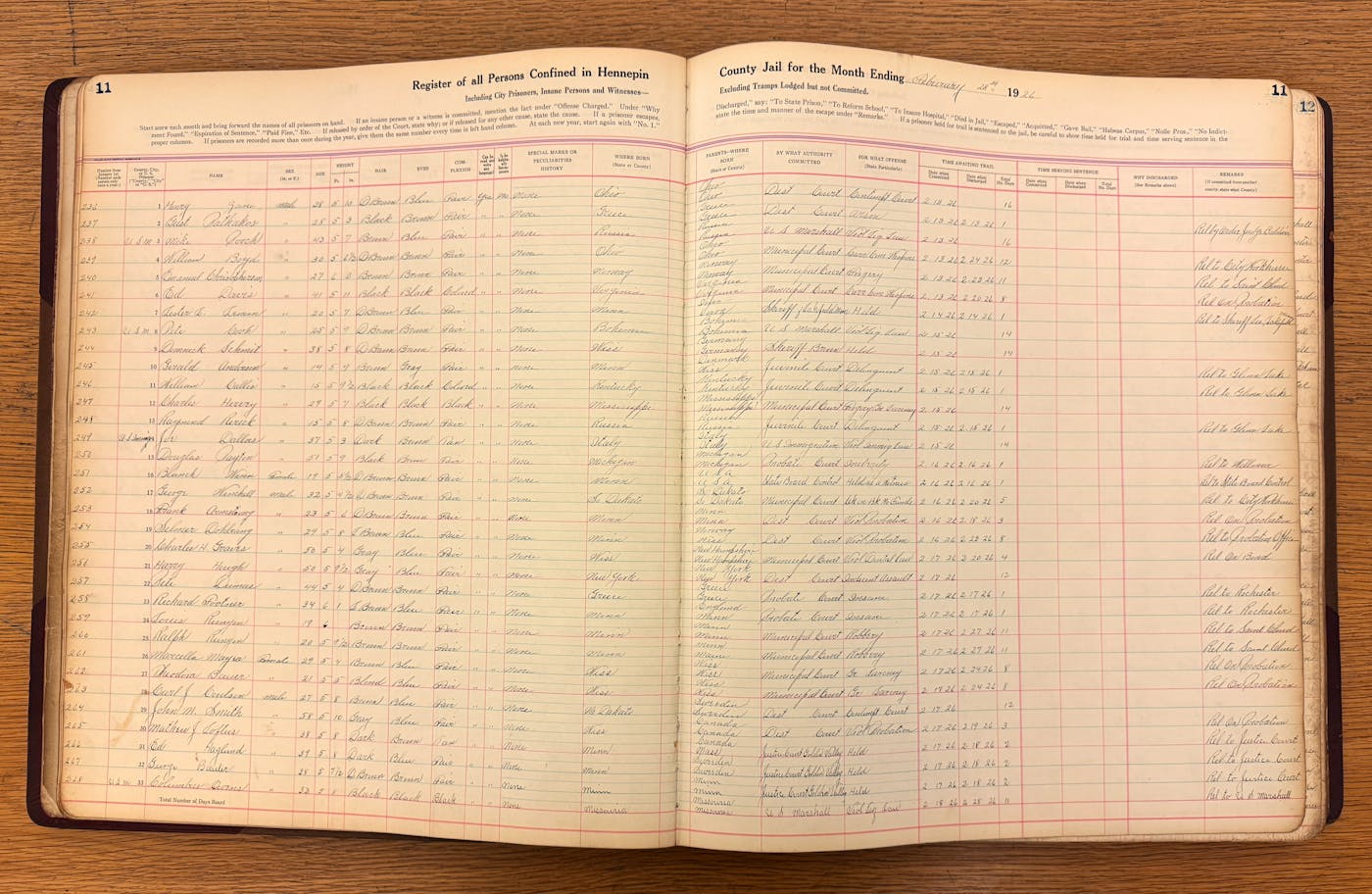
Eric Roper / The Minnesota Star Tribune
County jail records
Determining the outcome of the shooting also meant sorting through Hennepin County jail registers. These are kept at the Minnesota Historical Society. Eric scanned several years of these registers with his phone, and used optical character recognition technology to search for names. Additionally, he looked through county jail registers organized by prisoner at Minneapolis City Hall. A separate search for any state prison records also came up empty.
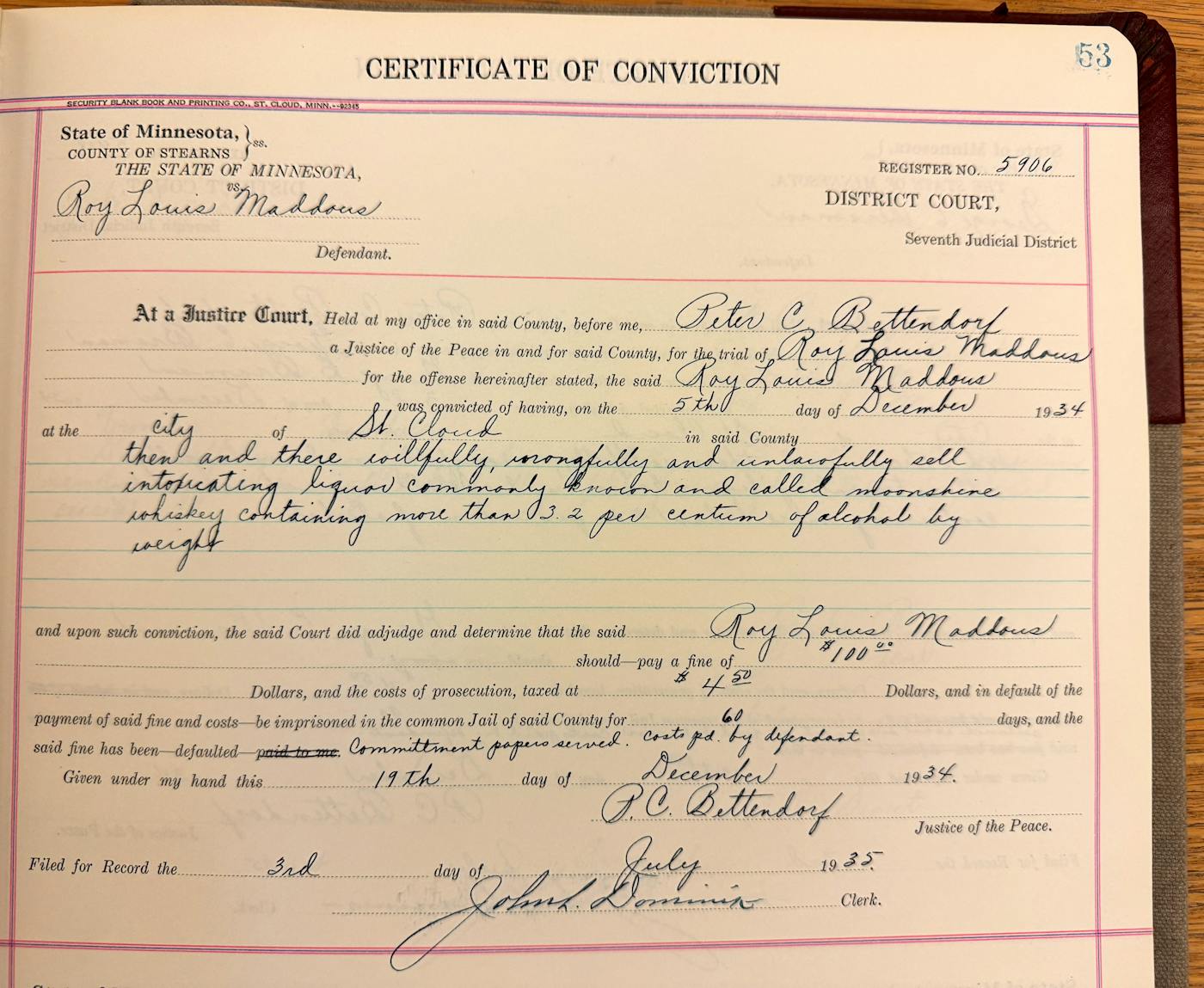
Eric Roper / The Minnesota Star Tribune
Roy Maddaus bootlegging case
After a long search for clues about a bootlegging connection to the shooting, Eric discovered Roy Maddaus' 1934 conviction for selling moonshine whiskey in St. Cloud.
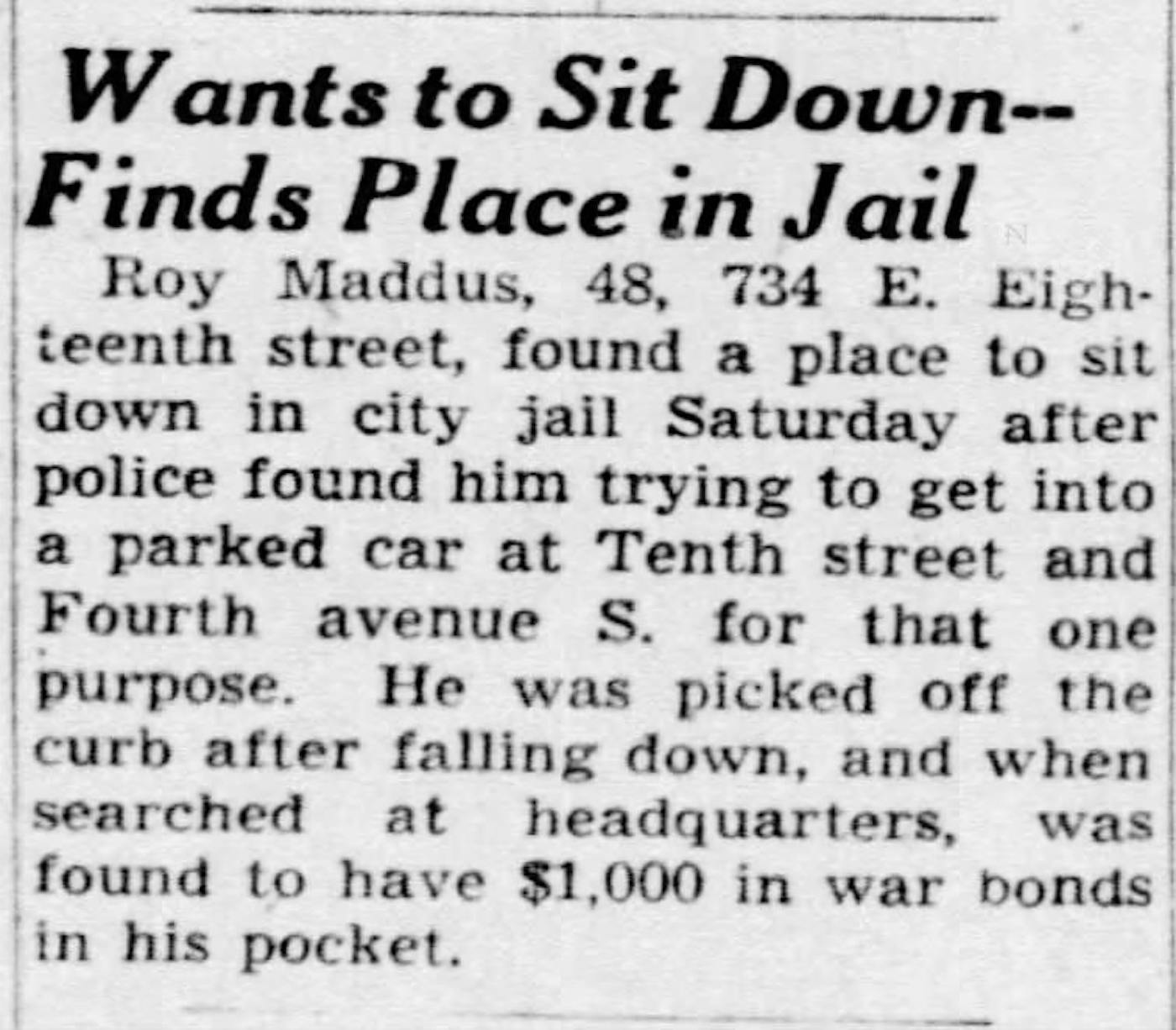
The Minnesota Star Tribune
Maddaus is a complicated character
Roy Maddaus and his brother Raymond both had wives at the time of the shooting in 1926. But they were single and living together in Minneapolis in 1940, according to the census. (Raymond had spent time in prison in the 1930s for extortion after seeking a bribe while acting as an assistant constable in Golden Valley.) In 1945, police picked up Roy as he tried to get into a parked car in downtown Minneapolis.

Abstract of title from Eric Roper's home
Money troubles
The Robinsons took out the first of four loans backed by their house just weeks after the shooting at Little Dixie Sandwich Shop. This loan would be repaid in 1927.

The Minnesota Star Tribune
Selling the business
Harry Robinson placed several identical ads in the Minneapolis Tribune in 1931 to sell his business.
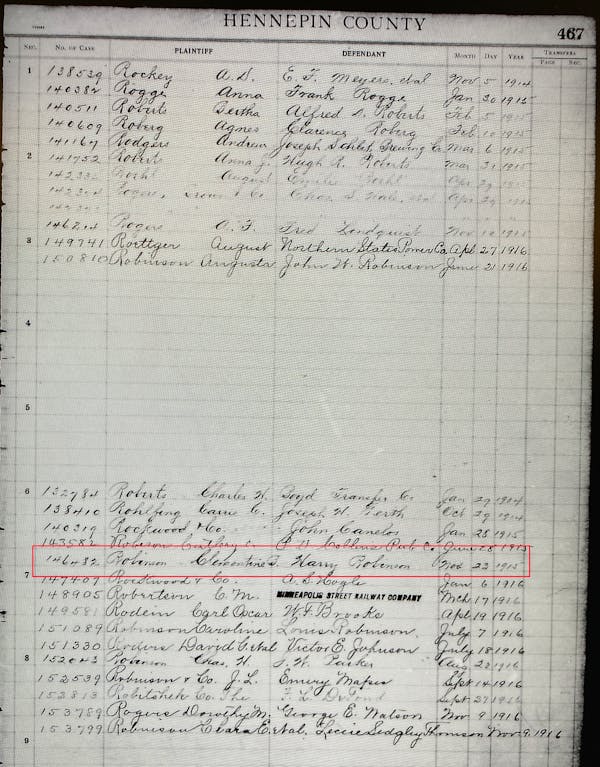
Eric Roper / The Minnesota Star Tribune
Discovering the divorce
Eric stumbled across a 1915 divorce filing between Clementine and Harry Robinson while searching through microfilmed indexes of civil court cases at the Minnesota History Center. Here is the filing as it appeared in the index. (A red rectangle has been added to the image to highlight the case.)
Eric Roper / The Minnesota Star Tribune
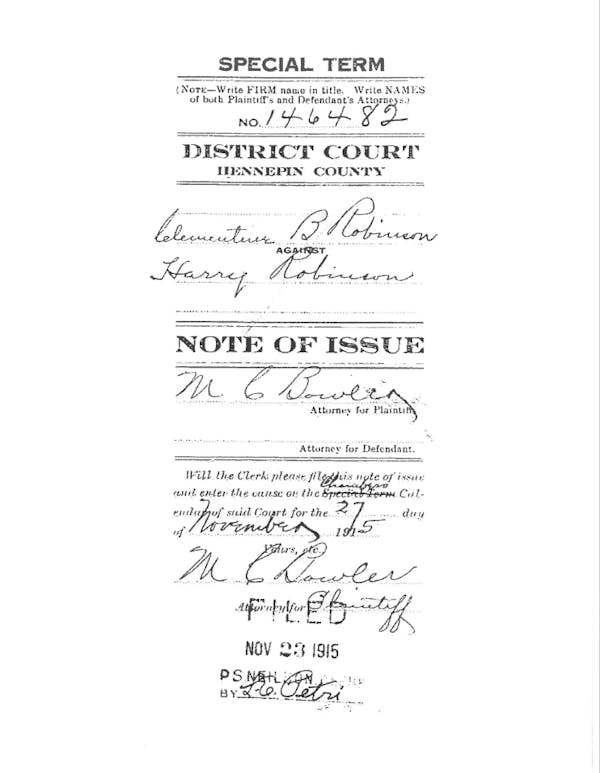
Hennepin County Courts
The divorce filing
Eric recovered the divorce filing from Hennepin County Courts. This is the cover page. The divorce was never finalized.
Hennepin County Courts
Other voices in this episode
Dionne Trice, marriage and family therapist at the Family Development Center in St. Paul.
Dianne M. Stewart, professor of religion and African American studies at Emory University, with a specialization in Black love.
Credits
Reporter
Eric Roper
Writer and Producer
Melissa Townsend
Executive Producer
Jenni Pinkley
Editor
MaryJo Webster
Fact Checking
Eric Roper
MaryJo Webster
Sound Design
Marcel Malekebu
Legal Review
Randy Lebedoff
Contributing editors
Maria Reeve
Suki Dardarian
Catherine Preus
Research assistance
Mapping Prejudice at the University of Minnesota Libraries
Promotion
Casey Darnell
Amanda Anderson
Matt Gillmer
Art and design
Anna Boone
Brock Kaplan
Mike Rice
Carla Fabian
Tricia Peterson
Lauren Munro
Product Development
Jon Opacich
Sia Xiao
Paulie Hendrickson
Dan Eichholz
Sydney Lewis
Brian Ganas
Special thanks to
Kyndell Harkness, Zoë Jackson, Laura McCallum, James Shiffer, Nancy Yang, MaKayla Hart, Laura Yuen, Tane Danger, and members of the community who served as advisers